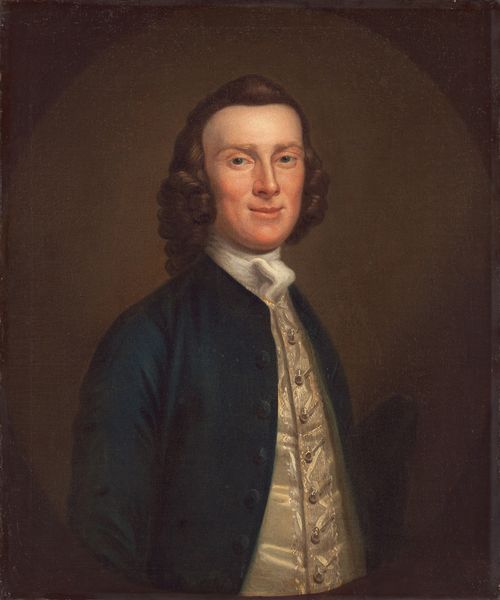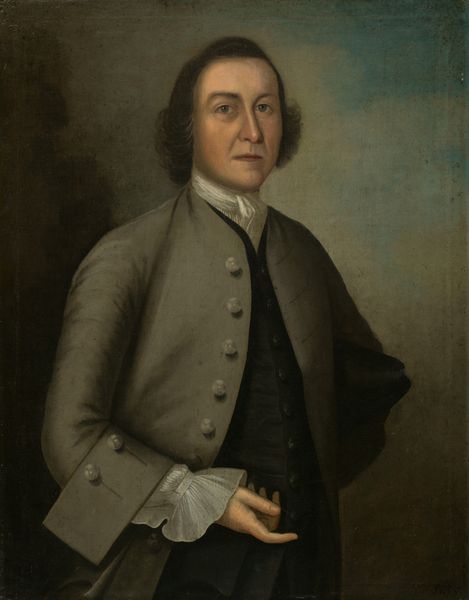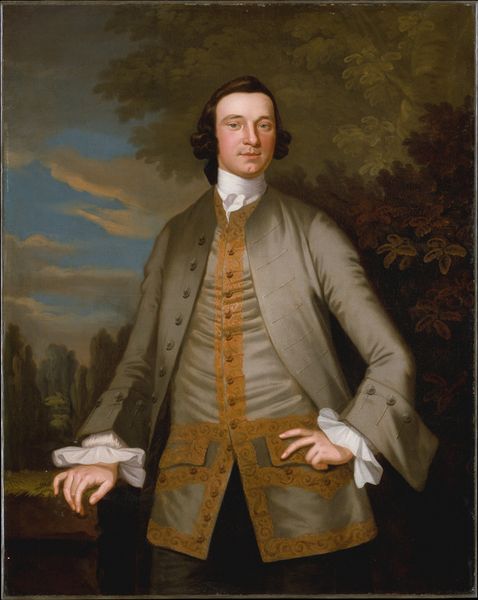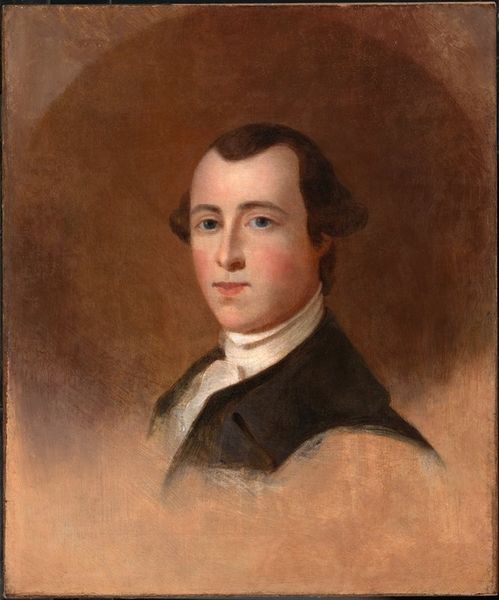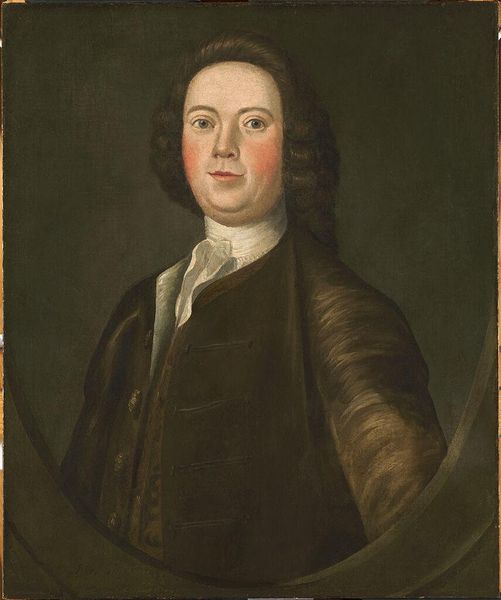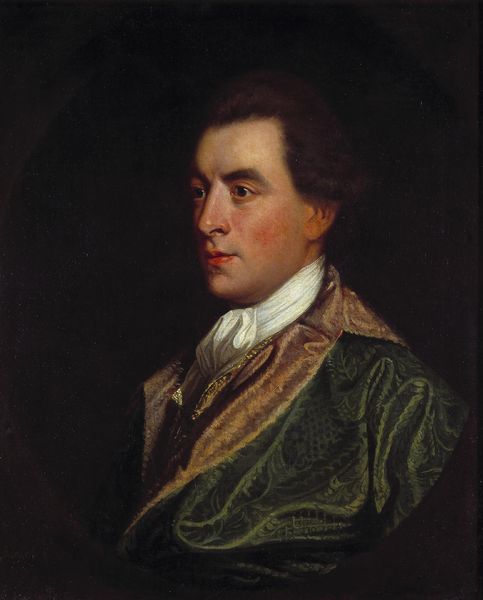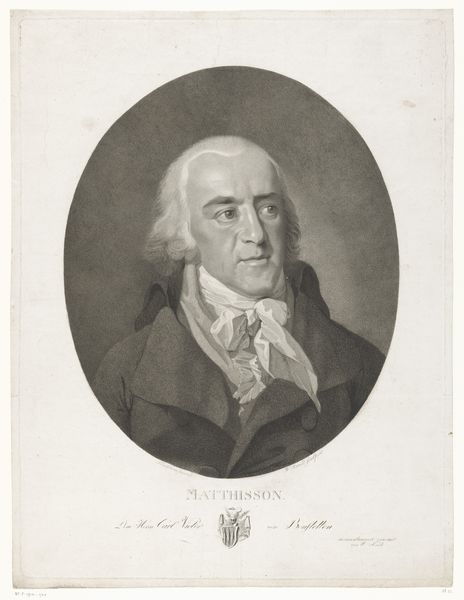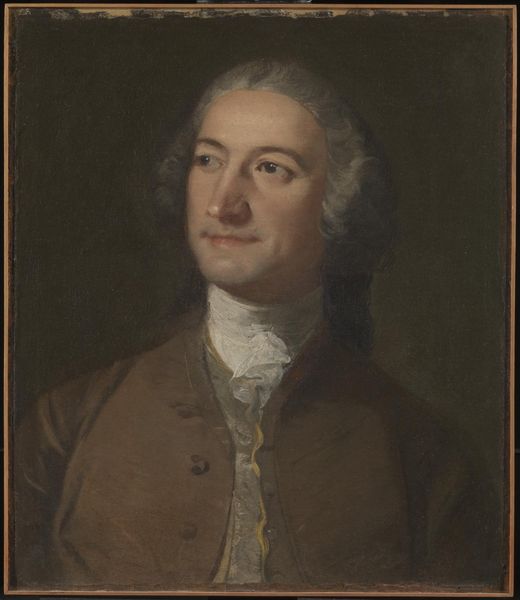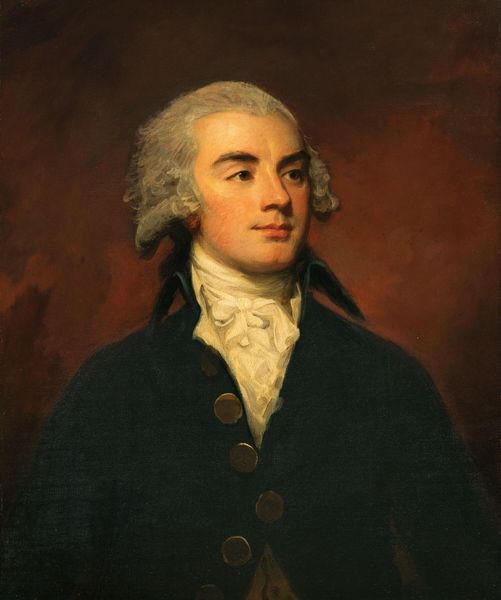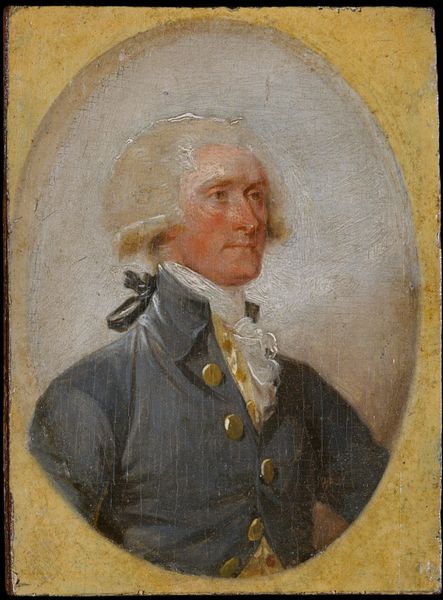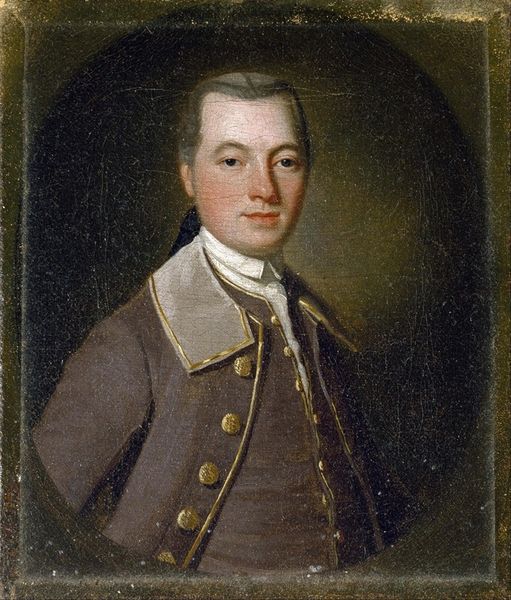
painting
#
portrait
#
baroque
#
painting
#
genre-painting
#
academic-art
Dimensions: overall: 76.4 x 63.4 cm (30 1/16 x 24 15/16 in.) framed: 94 x 81 x 7.6 cm (37 x 31 7/8 x 3 in.)
Copyright: National Gallery of Art: CC0 1.0
Curator: Here we have "A Gentleman of the Morris Family," a painting rendered between 1749 and 1752 by John Wollaston. Editor: My first thought is, wow, that olive-green coat practically glows against the dark background. He seems almost startled, doesn't he? As if we caught him mid-thought. Curator: Yes, the work employs techniques common in academic art of the Baroque era, a style prevalent at the time for portraits. Consider the pose: its construction is intended to signal status. This also needs to be placed in the context of increasing British presence in America. Editor: Absolutely. Status, yes, but there's also something... slightly melancholic in his eyes, don't you think? Or is that just my projection? I almost feel like offering him a cup of tea and asking what's on his mind. Curator: That tension between status and individual identity is interesting. Wollaston had a distinctive way of painting eyes, an almond shape that recurs in his portraits, yet we can think about what this image might mean in terms of class and power. It serves to uphold social structures but also potentially to critique them. Editor: So, beyond the immediate impression, where does the weight of the portrait rest? Curator: We must address issues such as colonialism and the historical conditions that produced both the artist and his sitter, the systems of enslavement upon which such portraits relied. And yet, the sitter may be implicated in such activities himself. We must always attempt to read against the grain of the portrait. Editor: And looking at him more, in this historical context, the glint of sadness now maybe signifies complicity rather than personal turmoil? He suddenly became so much more complex—and so much more unsettling! Curator: Precisely, this makes art history more than the study of style or artistic choices. It provides a context within which social and political forces could and did operate. Editor: I have to admit, my chat with "A Gentleman of the Morris Family" has certainly gotten a lot deeper now. Food for thought. Curator: Indeed, seeing the complexities behind seemingly straightforward images is precisely the rewarding work we have the opportunity to share with others.
Comments
No comments
Be the first to comment and join the conversation on the ultimate creative platform.
